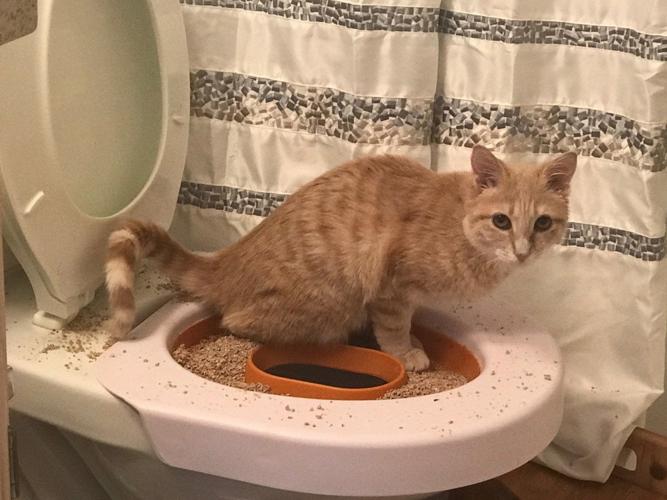Prevent Plumbing Problems: Never Flush Cat Poop Down Your Toilet - Professional Guidance
Prevent Plumbing Problems: Never Flush Cat Poop Down Your Toilet - Professional Guidance
Blog Article
The content in the next paragraphs involving Can You Flush Cat Poo or Litter Down the Toilet? is seriously entertaining. Don't overlook it.

Intro
As feline proprietors, it's essential to be mindful of exactly how we deal with our feline buddies' waste. While it might seem convenient to flush pet cat poop down the bathroom, this method can have damaging effects for both the setting and human health.
Ecological Impact
Flushing feline poop introduces hazardous pathogens and bloodsuckers into the water system, positioning a considerable danger to aquatic ecological communities. These contaminants can negatively impact aquatic life and concession water high quality.
Health and wellness Risks
Along with ecological issues, flushing cat waste can also pose health and wellness risks to humans. Cat feces may contain Toxoplasma gondii, a bloodsucker that can cause toxoplasmosis-- a potentially extreme ailment, specifically for expecting females and individuals with damaged body immune systems.
Alternatives to Flushing
The good news is, there are more secure and a lot more accountable means to take care of feline poop. Consider the complying with options:
1. Scoop and Dispose in Trash
The most usual approach of throwing away feline poop is to scoop it into an eco-friendly bag and throw it in the garbage. Be sure to utilize a specialized trash inside story and dispose of the waste immediately.
2. Usage Biodegradable Litter
Select naturally degradable pet cat clutter made from materials such as corn or wheat. These clutters are eco-friendly and can be safely disposed of in the trash.
3. Bury in the Yard
If you have a yard, take into consideration burying pet cat waste in an assigned location far from vegetable yards and water resources. Be sure to dig deep sufficient to prevent contamination of groundwater.
4. Set Up a Pet Waste Disposal System
Invest in an animal waste disposal system specifically made for cat waste. These systems use enzymes to break down the waste, decreasing smell and environmental effect.
Conclusion
Accountable pet dog ownership expands beyond supplying food and sanctuary-- it also includes correct waste monitoring. By avoiding flushing cat poop down the toilet and selecting different disposal approaches, we can lessen our environmental footprint and protect human health.
Why Can’t I Flush Cat Poop?
It Spreads a Parasite
Cats are frequently infected with a parasite called toxoplasma gondii. The parasite causes an infection called toxoplasmosis. It is usually harmless to cats. The parasite only uses cat poop as a host for its eggs. Otherwise, the cat’s immune system usually keeps the infection at low enough levels to maintain its own health. But it does not stop the develop of eggs. These eggs are tiny and surprisingly tough. They may survive for a year before they begin to grow. But that’s the problem.
Our wastewater system is not designed to deal with toxoplasmosis eggs. Instead, most eggs will flush from your toilet into sewers and wastewater management plants. After the sewage is treated for many other harmful things in it, it is typically released into local rivers, lakes, or oceans. Here, the toxoplasmosis eggs can find new hosts, including starfish, crabs, otters, and many other wildlife. For many, this is a significant risk to their health. Toxoplasmosis can also end up infecting water sources that are important for agriculture, which means our deer, pigs, and sheep can get infected too.
Is There Risk to Humans?
There can be a risk to human life from flushing cat poop down the toilet. If you do so, the parasites from your cat’s poop can end up in shellfish, game animals, or livestock. If this meat is then served raw or undercooked, the people who eat it can get sick.
In fact, according to the CDC, 40 million people in the United States are infected with toxoplasma gondii. They get it from exposure to infected seafood, or from some kind of cat poop contamination, like drinking from a stream that is contaminated or touching anything that has come into contact with cat poop. That includes just cleaning a cat litter box.
Most people who get infected with these parasites will not develop any symptoms. However, for pregnant women or for those with compromised immune systems, the parasite can cause severe health problems.
How to Handle Cat Poop
The best way to handle cat poop is actually to clean the box more often. The eggs that the parasite sheds will not become active until one to five days after the cat poops. That means that if you clean daily, you’re much less likely to come into direct contact with infectious eggs.
That said, always dispose of cat poop in the garbage and not down the toilet. Wash your hands before and after you clean the litter box, and bring the bag of poop right outside to your garbage bins.
https://trenchlesssolutionsusa.com/why-cant-i-flush-cat-poop/

Do you really like more info about Can You Flush Cat Poo or Litter Down the Toilet?? Create a remark below. We will be delighted to hear your thinking about this write up. Hoping that you come back again in the future. Loved our content? Please share it. Let another person discover it. Thank you so much for your time spent reading it.
Schedule A Service Report this page